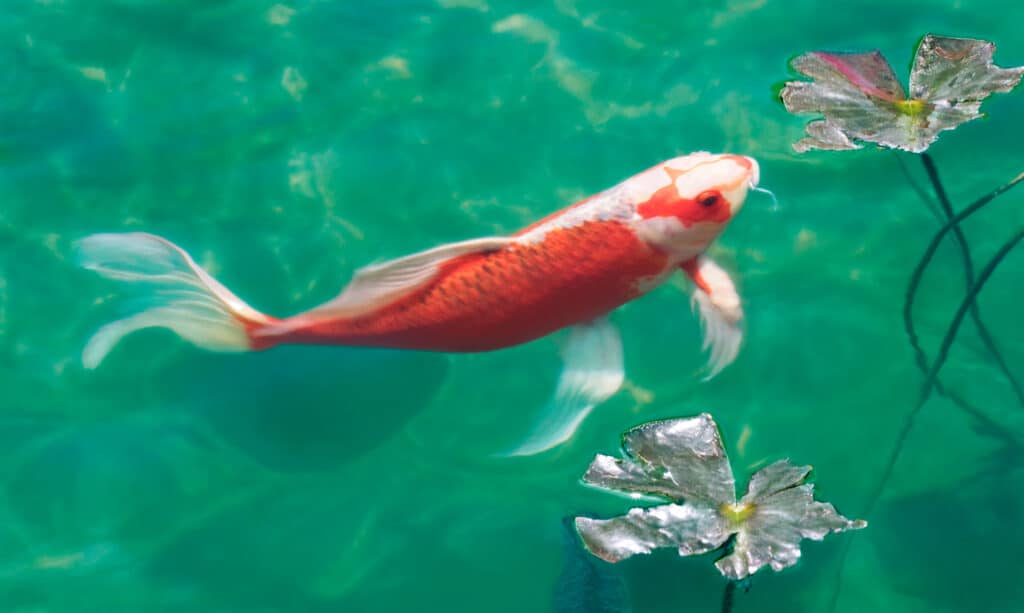
The color of the dye that you decide to use in your pond is essential and will affect how it looks and have an indirect effect on plant and animal life in your pond. There is an almost universal appeal to specific colors as they make the water look more natural, healthy, and aesthetically pleasing. The most popular colors among pond dye users are blue, blue-green, blue, and black.
The best colors for fish ponds are blue and black. Darker colors reduce algae overgrowth and result in warmer water, while lighter colors are better for keeping the water cool and oxygen-rich for fish. Blue-green is a readily available color but is not as popular as blue and black.
There are a few points to evaluate when deciding on the color of your pond. The importance of each of these points will determine which color is the best color dye for your pond. The following points are important to think about before deciding on the hue and lightness or darkness of your pond dye color.
How To Choose A Dye Color For Your Koi Pond

There are a few points to think of when deciding on the color of your pond. The importance of each of these points will determine which color is the best color dye for your pond. The following topics are vital to consider before deciding on the hue and lightness or darkness of your pond dye color:
- How Does Pond Dye Color Affect Color Complementing?
- How Does Pond Dye Color Affect Plant Life?
- How Does Pond Dye Color Affect Insect Life?
- How Does Pond Dye Color Affect Fish Life?
Pro Tip: If you’re tired of wasting money and making costly mistakes on the koi-keeping hobby or are thinking about buying koi fish but don’t know where to start, I strongly suggest you check out this ebook. I recently read this ebook, and it contains SO much useful information, such as:
- 3 proven steps to identify koi fish diseases
- WARNING: 3 things you should NEVER do when it comes to caring for koi
- When to seek professional help when it comes to looking after your koi
How Does Pond Dye Color Affect Color Complementing?
The color of dye chosen for your pond isn’t a decision made in isolation. Ponds are often surrounded by different shades of green and brown from surrounding plants, shrubbery, and other plant life. For example, a bold cerulean blue will complement saturated hues of apple-green, while a paler shade of sky-blue will not have the same complementary effect.
In this case, the best course of action would be to look at a color wheel to decide which dye color best matches the surrounding colors of the pond. If you are not interested in pairing colors and want your pond to directly reflect the colors surrounding it, choosing a very dark blue or black should suit your needs well.
How Does Pond Dye Color Affect Plant Life?
Most varieties of pond dye are entirely safe for plants and won’t be toxic to any of your decorative or eco-system-essential plants. Pond dye color does, however, could have a substantial indirect impact on plant life in your pond and will affect emergent plants, floating plants, and algae differently.
Pond Dye Color’s Effect On Algae
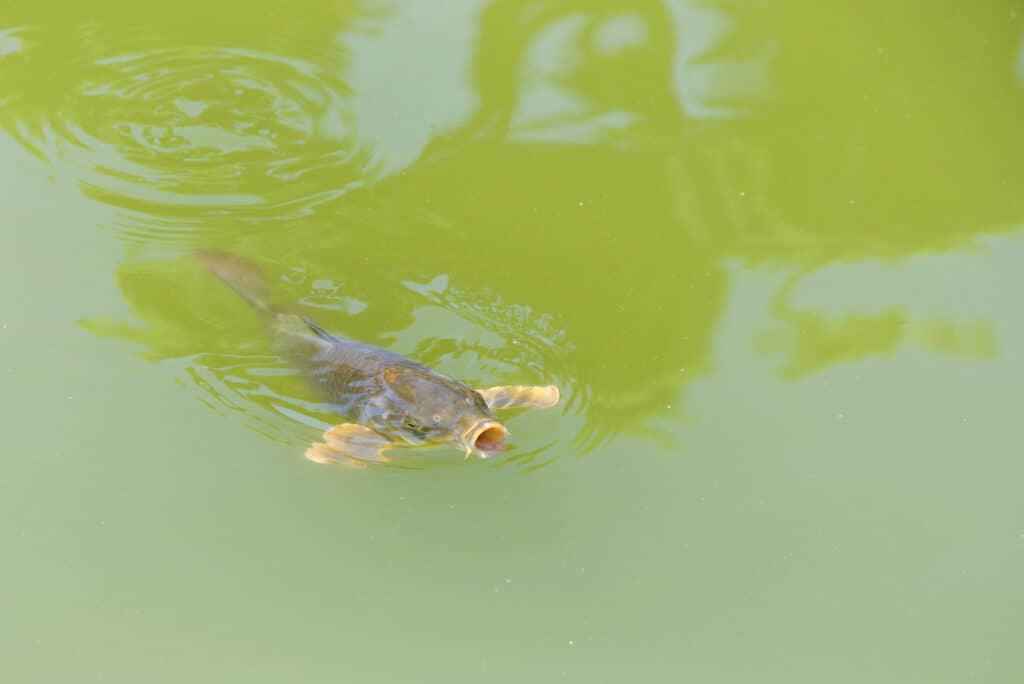
Algae thrive in ponds that are overexposed to sunlight. Overgrowth of algae results from receiving too much of a specific portion of the light spectrum.
The color dye will effectively block a portion of the light spectrum received from sunlight. Black, dark blue, and dark blue-green colors will most effectively block the part of the light spectrum that most encourages photosynthesis, which is how algae achieve rapid growth. This will reduce algae growth and keep your pond clearer.
If you would like to learn more about how to reduce the algae in your Koi pond, I wrote a blog post that you can read here.
Pond Dye Color’s Effect On Emergent And Floating Plants
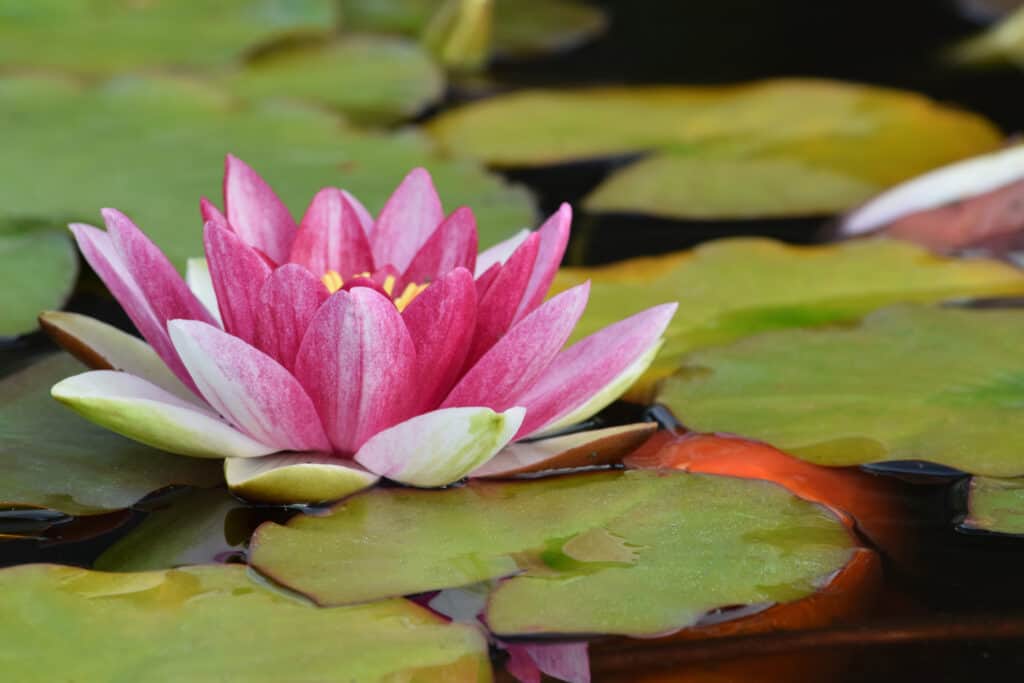
Emergent and floating plants are not as quickly affected by the color of the pond’s dye since they receive sunlight from above the water. Emergent and floating plants aren’t affected by the color of pond dye since they emerge above the water’s surface and receive most of their sunlight from the unaffected air above the water.
If you would like to learn more about pond plants, click here to read my blog post called What plants do Koi fish not eat?
How Does Pond Dye Color Affect Insect Life?
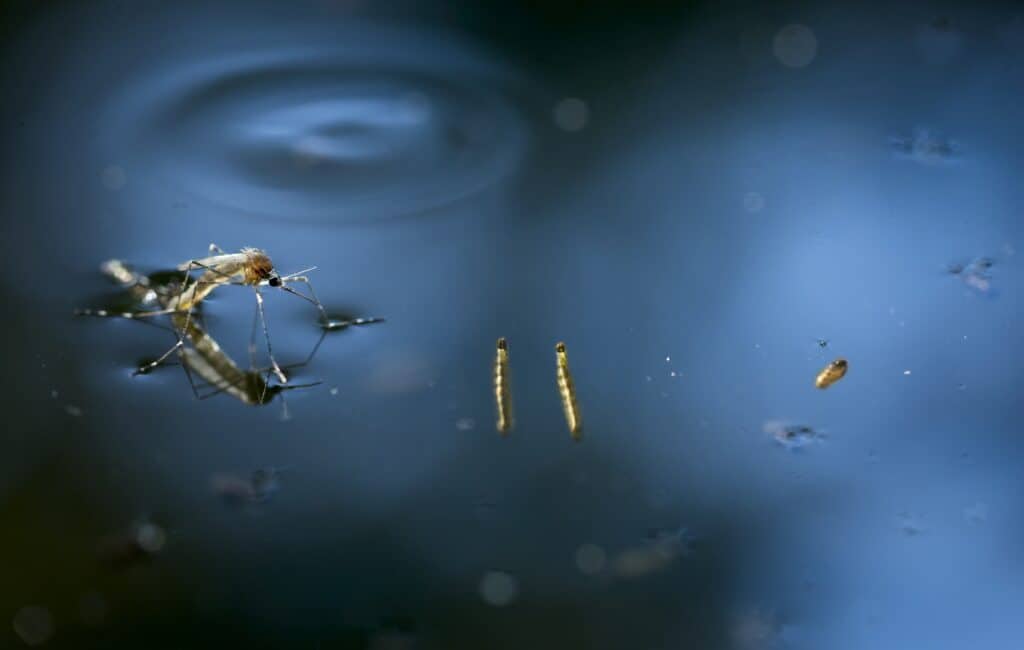
Dyed pond water is safe for ecosystems and will not cause any damage to the insect biome in and around your pond. A study done by Reading University suggests that female mosquitoes prefer to lay their eggs in water with black pond dye in it.
It is also noteworthy that darker colors will cause overall warmer pond water since darker colors absorb more heat from the sun. People in areas with mosquito problems may also want to avoid having very dark pond dye in ponds close to their living spaces.
I recently wrote a blog post called Do Koi fish eat mosquito larvae, which you can read here.
How Does Pond Dye Color Affect Fish Life?
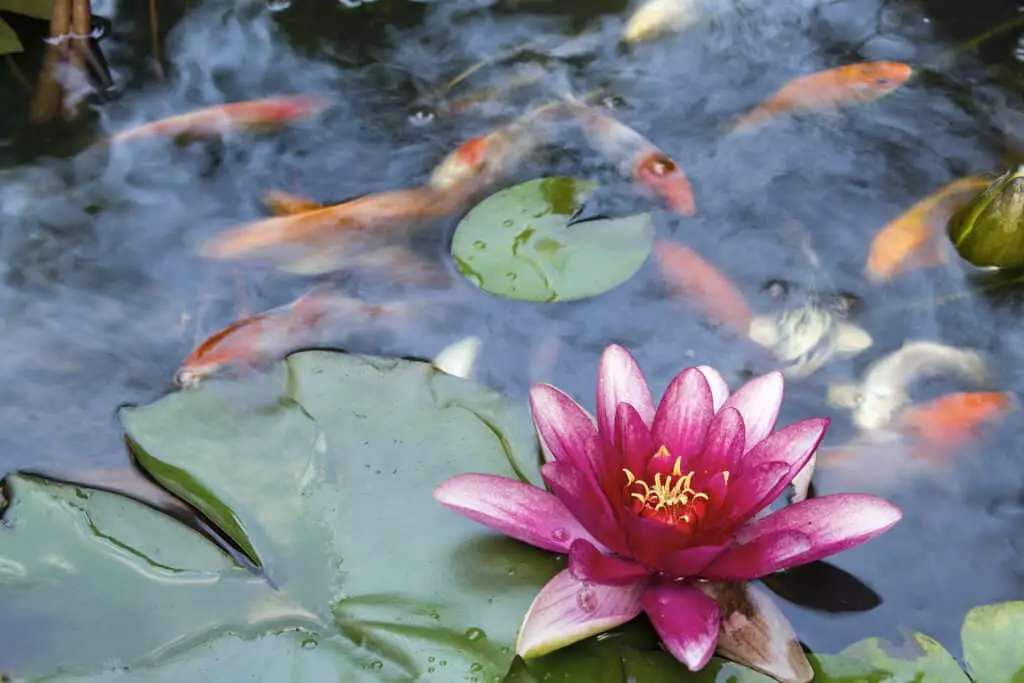
Pond dyes are generally safe for all fish and aquatic life. However, pond dyes won’t affect fish directly; some of the submerged plants that fish consider desirable food may grow slower due to portions of the light spectrum being blocked by darker color dyes. Dark colors are more likely to cause slower growth than paler, lighter colors.

Should I Put Dye In My Pond?
Not all ponds need pond dye. If you are happy with the general appearance, plant growth, fish-friendliness, and overall health of your pond, plant dye may not be a necessary component of your pond at this point.
Over time, however, you might start to notice that your pond is not doing very well; for example, weeds and algae are taking over, birds of prey might be thinning your once-impressive koi fish collection, or simply that your guests don’t find your garden view as striking as they used to. If these are some of the pond problems you have, dyeing your pond is a good course of action to consider.
Lighter pond dye colors will result in lower temperatures and higher oxygen levels for fish to breathe in the warmer months of the year.
Choosing a color that is very dark or that closely matches the color of the fish in the pond will also hide them better from predatory birds that fly overhead. All pond dye colors will make your pond more reflective, although dark colors will be more effective for this task.
How does pond lining color affect dye color?
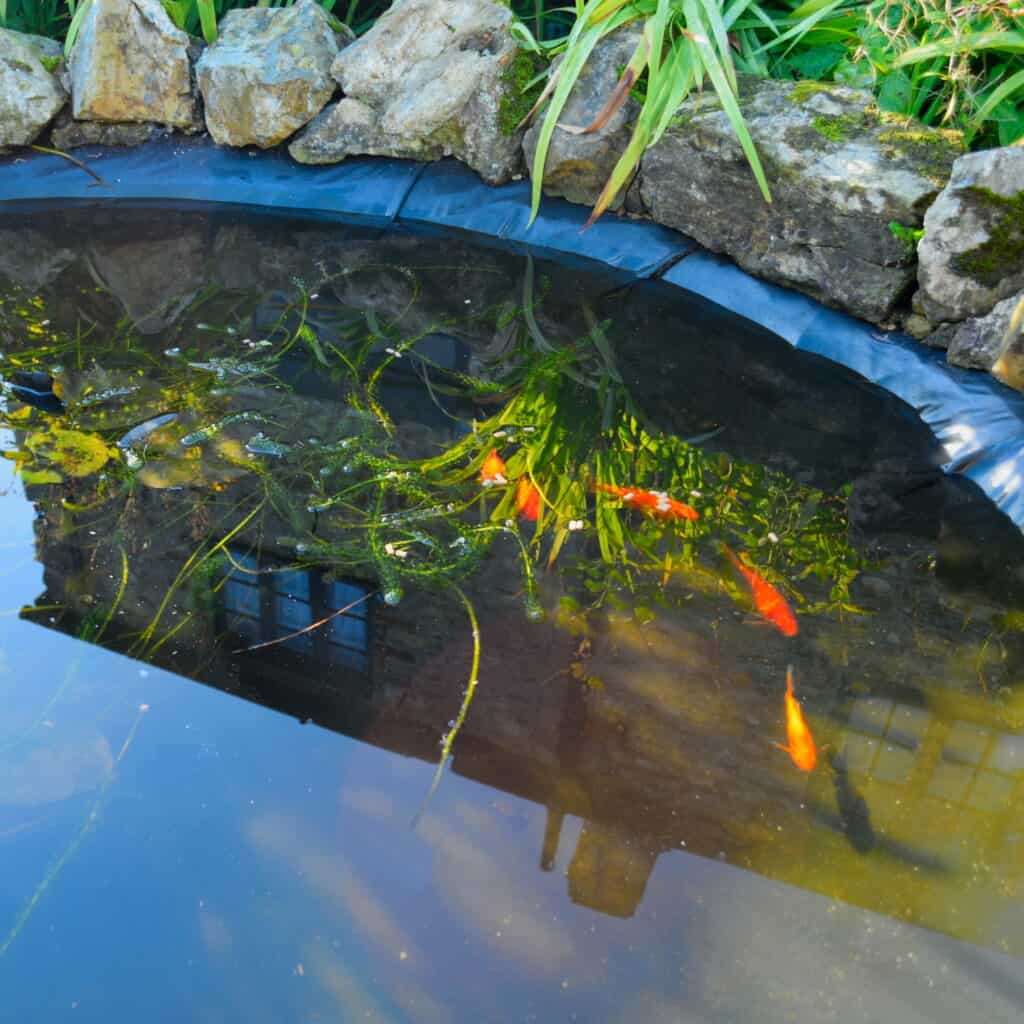
If concentrated pond dye touches your pond’s lining, it will stain. To avoid stains on your lining, pour the exact amount of dye prescribed for your pond size into the deepest part of your pond to prevent concentrated dye from touching the sides. Choosing a dye color that matches your pond lining will also help avoid the visibility of stains over time.
I wrote a blog post called The 10 best thick pond liners, that you can read here.
Conclusion
Choosing the best color dye for your fish pond is not as straightforward as it might seem when considering the aesthetic appeal, close surroundings as well as the welfare of the plants and fish submerged in the pond.
Adding dye to your pond will help in an overall improvement in the most important aspects. Blue appears to be the overall winner in terms of the best color, while the lightness and darkness of the blue vary depending on aesthetics, oxygen richness, and protection from predators desired for the pond.

